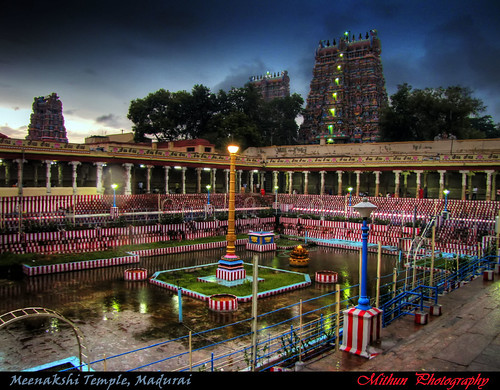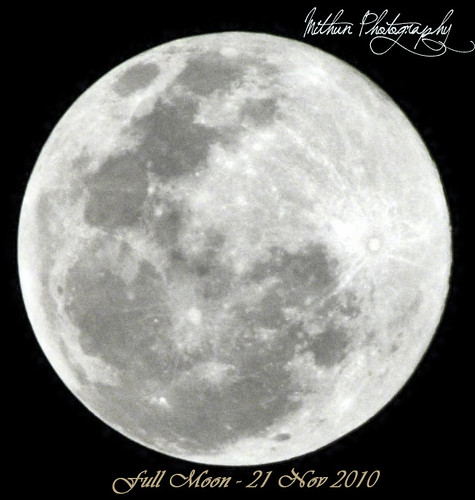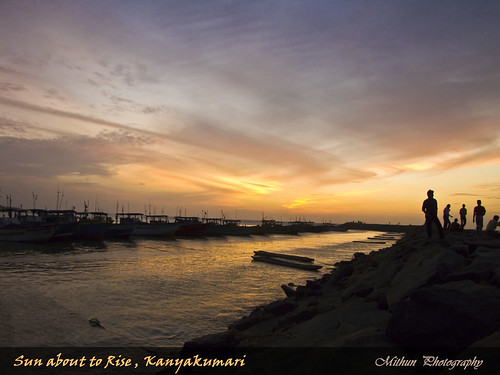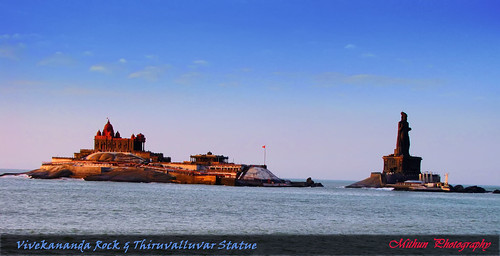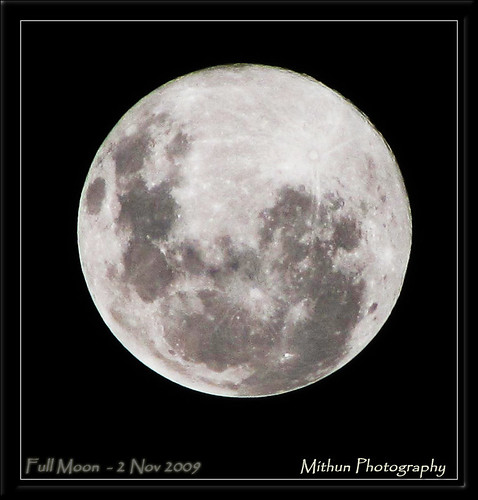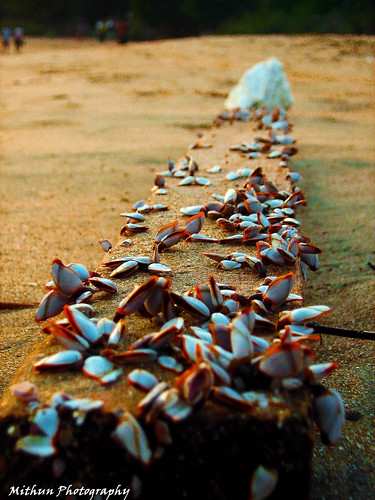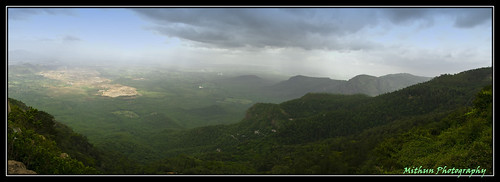Thursday, December 30, 2010
Hoyesleswara Temple - Halibedu - North karnataka - India
Hoysaleswara temple is a temple dedicated to Hindu God Shiva. It was built in Halebidu (in modern Karnataka state) during the Hoysala Empire rule in the 12th century by King Vishnuvardhana. The construction was completed in 1121 CE. During the early 14th century, Halebidu was sacked and looted by Muslim invaders from northern India and the temple fell into a state of ruin and neglect. Previously known as Dorasamudra or Dwarasamudra, Halebidu is 16 km from Belur, 31 km from Hassan and 149 km from Mysore, in the state of Karnataka, India.
Visit my blogs @ mithunkundu.blogspot.com
My WoRdPrEsS blogs @ mithunkundu.wordpress.com/
You can visit my Flickr posts @ http://www.blogger.com/ www.flickr.com/photos/mithunkundu/
You can me catch me on Facebook @ www.facebook.com/#!/profile.php?id=100000525746657
Follow me on Twitter @ twitter.com/mithunkundu1983
Saturday, December 18, 2010
Bangalore - Madurai - Rameswaram - Kanyakumari - Bangalore ( 3 Day / 5 Nights)
 |
 |
 |
 |
 |
 |
 |
 |
 was built by Ariyanatha Mudaliar in 1569. He was the Prime Minister and General of Viswanatha Nayak of the first Nayaka of Madurai (1559-1600 A.D.). He was also the founder of Poligar System, the quasi-feudal organization of the country, which was divided into multiple palayams or small provinces and each palayam was ruled by a palayakkarar or a petty chief. At the entrance of the Mandapam, we can still see his statue; the majestic pose of Ariyanatha Mudaliar seated on a beautiful horse-back which flanks one side of the entrance to the temple. The statue is still periodically crowned with garlands by modern worshippers. Each pillar is carved and is a monument of the Dravidian sculpture. There is a Temple Art Museum in the hall where icons, photographs, drawings, and other exhibits of the 1200 years old history are displayed. Just outside this mandapam, towards the west, are the Musical Pillars. Each pillar, when struck, produces a different musical note. The kalyana mandapa, to the south of the pillared hall, is where the marriage of Shiva and Parvati is celebrated every year during the Chithirai Festival in mid-April.
was built by Ariyanatha Mudaliar in 1569. He was the Prime Minister and General of Viswanatha Nayak of the first Nayaka of Madurai (1559-1600 A.D.). He was also the founder of Poligar System, the quasi-feudal organization of the country, which was divided into multiple palayams or small provinces and each palayam was ruled by a palayakkarar or a petty chief. At the entrance of the Mandapam, we can still see his statue; the majestic pose of Ariyanatha Mudaliar seated on a beautiful horse-back which flanks one side of the entrance to the temple. The statue is still periodically crowned with garlands by modern worshippers. Each pillar is carved and is a monument of the Dravidian sculpture. There is a Temple Art Museum in the hall where icons, photographs, drawings, and other exhibits of the 1200 years old history are displayed. Just outside this mandapam, towards the west, are the Musical Pillars. Each pillar, when struck, produces a different musical note. The kalyana mandapa, to the south of the pillared hall, is where the marriage of Shiva and Parvati is celebrated every year during the Chithirai Festival in mid-April.Tuesday, November 23, 2010
Full Moon - 21 Nov 2010
This photo was taken on 21 November from My roof top...
After several attempt I got the exposer correct. Hope you will like that
Thursday, September 30, 2010
New Day New Hope New ray
New Day about to start with lot of hope & new colors...
You can visit my Flickr posts @ http://www.flickr.com/photos/mithunkundu/
My WoRdPrEsS blogs @ http://mithunkundu.wordpress.com/
You can me catch me on Facebook @ http://www.facebook.com/#!/profile.php?id=100000525746657
Follow me on Twitter @ http://twitter.com/mithunkundu1983
Wednesday, September 29, 2010
A small Fishing Village - Golden sea shore after sunrise - Kanyakumari

A small Fishing Village - Golden sea shore after sunrise - Kanyakumari, originally uploaded by Mithun Kundu.
A small Fishing Village - Golden sea shore after sunrise - Kanyakumari
You can visit my Flickr posts @ http://www.flickr.com/photos/mithunkundu/
My WoRdPrEsS blogs @ http://mithunkundu.wordpress.com/
You can me catch me on Facebook @ http://www.facebook.com/#!/profile.php?id=100000525746657
Follow me on Twitter @ http://twitter.com/mithunkundu1983
This shot was taken just after the sunrise. Near the sunrise point Kanyakumari.
You can observe why early morning hours are called "Golden Hours" for natural photography
Uploaded by Mithun Kundu on 29 Sep 10, 9.53AM IST.
Tuesday, September 28, 2010
Sunrise @ Kanyakumari
You can visit my Flickr posts @ http://www.flickr.com/photos/mithunkundu/
My WoRdPrEsS blogs @ http://mithunkundu.wordpress.com/
You can me catch me on Facebook @ http://www.facebook.com/#!/profile.php?id=100000525746657
Follow me on Twitter @ http://twitter.com/mithunkundu1983
Watching the sunrise and sunset is one of the most cherished activities at Kanyakumari. In fact it would not be any exaggeration if we say that this activity has assumed almost a ritualistic proportion. If you are in a hotel your sleep would automatically break at around 5.30 am with the sounds of alarm clock all around. Bleary eyed, you head for the sunrise point or take up a vantage position in the terrace of your hotel building. By 6 am the majestic sight of daybreak unfolds gradually. It is a lifetime experience to observe the image of the night sky metamorphosing bit by bit into various hues of colours. The effect is all the more appealing against the silhouette of fishing boats in the foreground. You can never forget the sun rising above the horizon from the Bay of Bengal.
Uploaded by Mithun Kundu on 28 Sep 10, 6.37PM IST.
Monday, September 27, 2010
Sun about to Rise - Kanyakumari - India
You can visit my Flickr posts @ http://www.flickr.com/photos/mithunkundu/
My WoRdPrEsS blogs @ http://mithunkundu.wordpress.com/
You can me catch me on Facebook @ http://www.facebook.com/#!/profile.php?id=100000525746657
Follow me on Twitter @ http://twitter.com/mithunkundu1983
Thursday, September 23, 2010
Vivekananda Rock Memorial & Thiruvalluvar Statue, Kanyakumari
Vivekananda Rock Memorial is a sacred monument and popular tourist attraction in Kanyakumari, India. The memorial stands on one of two rocks located about 500 meters off mainland India's southernmost tip. It was built in 1970 by the Vivekananda Rock Memorial Committee in honour of the visit of the great spiritual teacher Swami Vivekananda to Shripada Parai during the month of December 1892 for deep meditation and enlightenment. He swam to this rock and meditated about the past, present and future of India. It is said that he attained enlightenment on the rock, and henceforth became a reformer and philosopher.
From very ancient times, the rock has been regarded as a sacred place. The mythical tradition states that it has been known as 'Sripada Parai', meaning the rock that has been blessed by the touch of ‘the sacred feet’ of the Devi Kumari. On the rock is a projection similar in form to a human foot and a little brownish in complexion, which has traditionally been venerated as a symbol of Shripadam. According to legend, it was on this rock that Devi Kumari performed austerity.
A meditation hall (Dhyana Mandapam) is also attached to the memorial for visitors to meditate. The design of the mandapa incorporates different styles of temple architecture from all over India. It houses a statue of Vivekananda. The merger of three seas - Bay of Bengal, Arabian Sea and Indian Ocean can be seen from these rocks.
The memorial consists of two main structures, the Vivekananda Mandapam and the Shripada Mandapam.
The Thiruvalluvar Statue is a 133 feet (40.5 m) tall stone sculpture of the Tamil poet and saint Tiruvalluvar, author of the Thirukkural. It was opened in January 1, 2000 (Millenium) and is located atop a small island near the town of Kanyakumari, where two seas and an ocean meet; the Bay of Bengal, the Arabian Sea, and the Indian Ocean . The statue has a height of 95 feet (29 m) and stands upon a 38 foot (11.5 m) pedestal that represents the 38 chapters of "virtue" in the Thirukkural. The statue standing on the pedestal represents "wealth" and "pleasure", signifying that wealth and love be earned and enjoyed on the foundation of solid virtue.
The combined height of the statue and pedestal is 133 feet (40.5 m), denoting the 133 chapters in the Thirukkural. It has a total weight of 7000 tons.
The statue, with its slight bend around the waist is reminiscent of a dancing pose of the ancient Indian deities like Nataraja. It was sculpted by the Indian sculptor Dr. V. Ganapati Sthapati, who also created the Iraivan Temple.
You can visit my Flickr posts @ http://www.flickr.com/photos/mithunkundu/
My WoRdPrEsS blogs @ http://mithunkundu.wordpress.com/
You can me catch me on Facebook @ http://www.facebook.com/#!/profile.php?id=100000525746657
Follow me on Twitter @ http://twitter.com/mithunkundu1983
Wednesday, September 22, 2010
Full Moon | 2 Nov 2009 | From Rooftop
Full Moon | 2 Nov 2009 | From Rooftop
You can visit my Flickr posts @ http://www.flickr.com/photos/mithunkundu/My WoRdPrEsS blogs @ http://mithunkundu.wordpress.com/
You can me catch me on Facebook @ http://www.facebook.com/#!/profile.php?id=100000525746657
Follow me on Twitter @ http://twitter.com/mithunkundu1983
Grown Up | Gokarna | Karnataka | India
You can visit my Flickr posts @ http://www.flickr.com/photos/mithunkundu/
My WoRdPrEsS blogs @ http://mithunkundu.wordpress.com/
You can me catch me on Facebook @ http://www.facebook.com/#!/profile.php?id=100000525746657
Follow me on Twitter @ http://twitter.com/mithunkundu1983
Tuesday, September 21, 2010
Hogenakkal Falls | Tamilnadu | India
Shoot @ 31 Aug 2007
Hogenakkal Falls is in Tamilnadu, India. It is fondly called the Indian Niagara. the place is very beautiful indeed.
River Cauvery in Southern India causes a series of beautiful falls at Hogenakkal (smoking rocks). The falls are usually gentle, beautiful and a major tourist attraction. The river Cauvery is a major river in southern India. It flows along the Karnataka-Tamilnadu State border at Hogenakkal.
The route Bangalore-Hosur-Krishnagiri-Dharmapuri-Hogennakkal (186 km) was very good. The Indian National Highway NH-7 that connects these places is very well maintained and is a pleasure to drive. I covered this distance on hired car ... and it was a wonderful experience !
Location : Hogenakkal, 50 kms from Dharmapuri, Tamilnadu State, India
You can visit my Flickr posts @ http://www.flickr.com/photos/mithunkundu/
My WoRdPrEsS blogs @ http://mithunkundu.wordpress.com/
You can me catch me on Facebook @ http://www.facebook.com/#!/profile.php?id=100000525746657
Follow me on Twitter @ http://twitter.com/mithunkundu1983
Yercaud View from Lady's Seat
Yercaud View from Lady's Seat
Yercaud (Tamil: ஏற்காடு) is a hill station near Salem, Tamil Nadu, India in the Servarayan range of hills (anglicized as Shevaroys) in the Eastern Ghats. It is at an altitude of 1515 metres (4970 feet) above the mean sea level. The highest point in Yercaud is the Servarayan temple. Hence the Yercaud hill area is called Shevaroy Hills
Uploaded by Mithun Kundu on 2 Aug 10, 12.18PM IST.
You can visit my Flickr posts @ http://www.flickr.com/photos/mithunkundu/
My WoRdPrEsS blogs @ http://mithunkundu.wordpress.com/
You can me catch me on Facebook @ http://www.facebook.com/#!/profile.php?id=100000525746657
Follow me on Twitter @ http://twitter.com/mithunkundu1983
Monday, September 20, 2010
Thousand Pillar Hall
Meenakshi Sundareswarar Temple or Meenakshi Amman Temple
Meenakshi Sundareswarar Temple or Meenakshi Amman Temple
is an historic Hindu temple located in the holy city of Madurai, Tamil Nadu, India. It is dedicated to god Shiva - in the form of Sundareswarar or Beautiful Lord- and his consort, Parvati in the form of Meenakshi. The temple forms the heart and lifeline of the 2500 year old city of Madurai. The complex houses 14 magnificent Gopurams or towers including two golden Gopurams for the main deities, that are elaborately sculptured and painted. The temple is a significant symbol for the Tamil people, and has been mentioned since antiquity in Tamil literature, though the present structure is believed to have been built in 1600. The tallest temple tower is 51.9 metres (170 ft) high
Porthamarai Kulam, the sacred pond inside the temple, is a very holy site for devotees. People go around the 165 ft (50 m) by 120 ft (37 m) lake before entering the main shrine. The name means the Pond with the Golden Lotus, and the lotus that grows in it has a golden color. According to legend, Lord Shiva promised a stork that no fish or other marine life would grow here and thus no marine animals are found in the lake.[2] In the Tamil legends, the lake is supposed to be a judge for judging a worth of a new literature. Thus, authors place their works here and the poorly written works are supposed to sink and the scholastic ones are supposed to float
Keep following the posts here. Lots more to come.
You can visit my Flickr posts @ http://www.flickr.com/photos/mithunkundu/
You can me catch me on Facebook @ http://www.facebook.com/#!/profile.php?id=100000525746657
Follow me on Twitter @ http://twitter.com/mithunkundu1983
View From - Thirumalai Nayak Palace
You can visit my Flickr posts @ http://www.flickr.com/photos/mithunkundu/
My WoRdPrEsS blogs @ http://mithunkundu.wordpress.com/
You can me catch me on Facebook @ http://www.facebook.com/#!/profile.php?id=100000525746657
Follow me on Twitter @ http://twitter.com/mithunkundu1983


